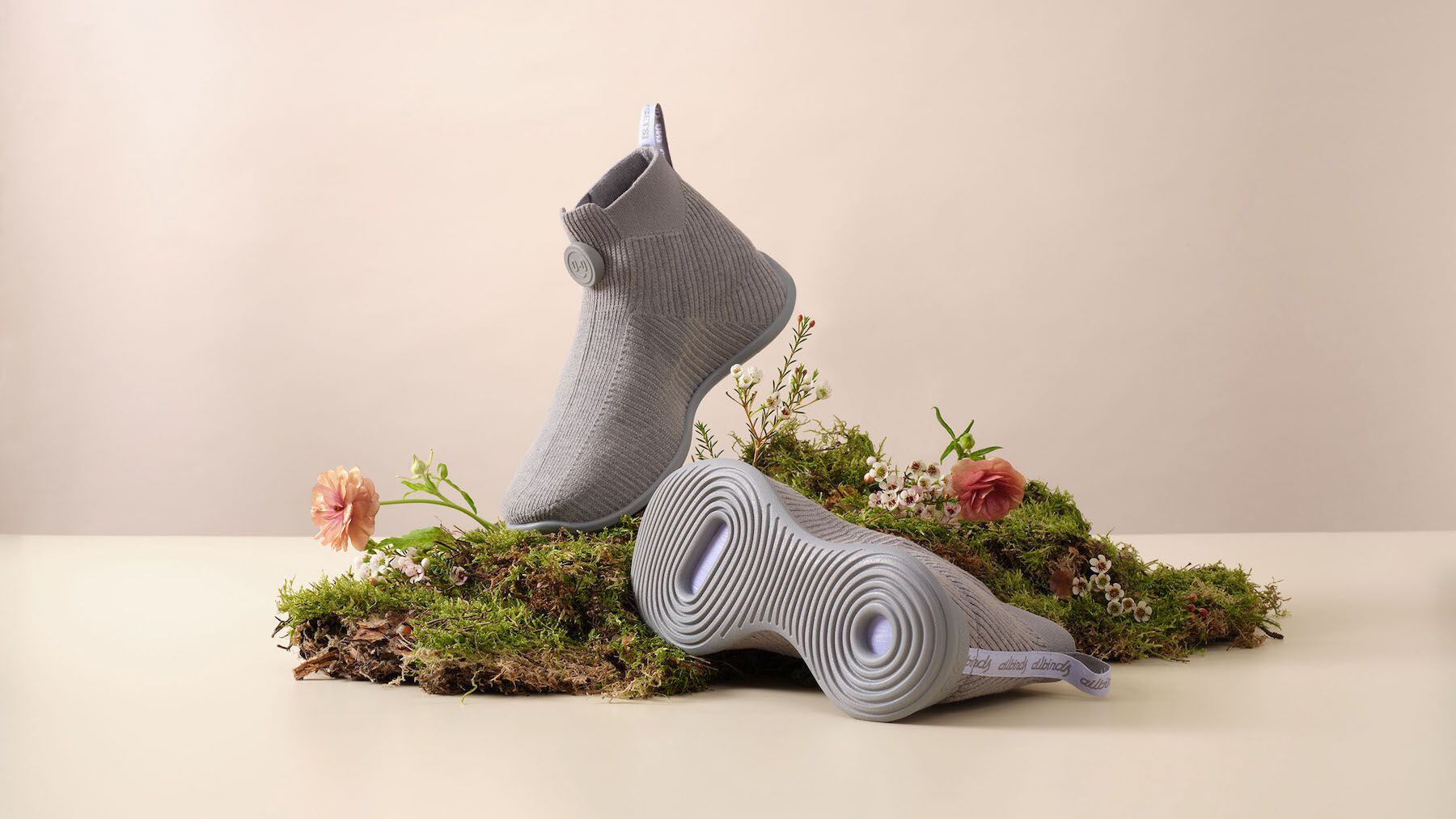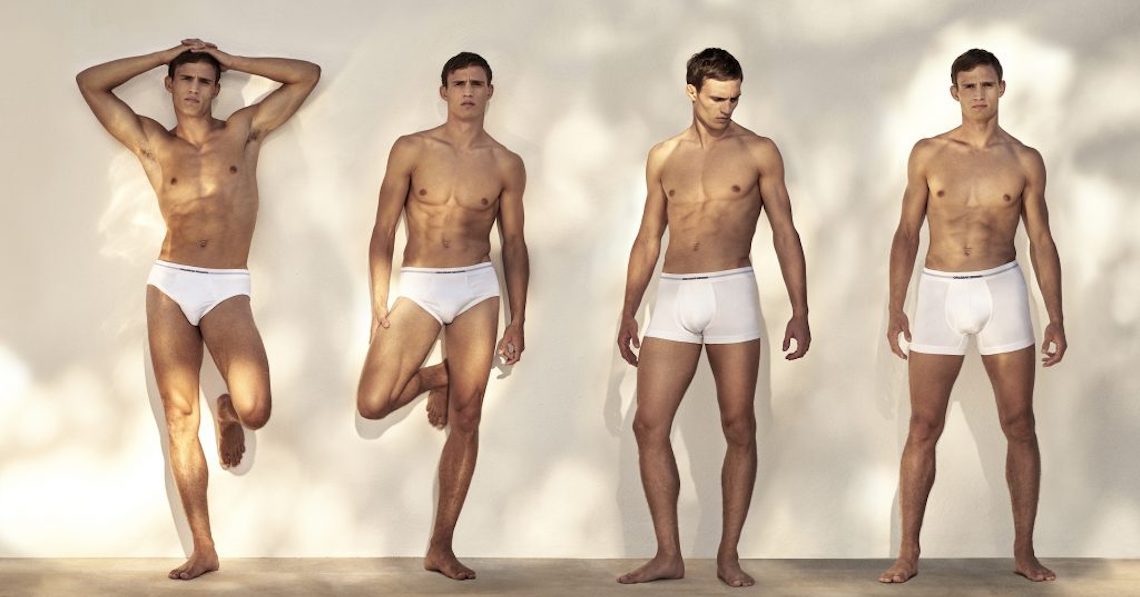Net Zero-Carbon Fashion: Too Good to Be True?
Last week, Allbirds unveiled the shoe it’s betting will help restore its battered fortunes.
The sock-like “Mo.onshot” sneaker has a more avant-garde design than the normcore wool runners for which the San Francisco-based brand is best known, but its most stand out feature is its net carbon footprint: it doesn’t have one.
By focusing on materials that draw down more carbon than they emit and lowering transport and manufacturing impact as much as possible, the brand says it has succeeded in designing “the world’s first net zero-carbon shoe.”
But the basis of such calculations for the industry is fraught. Fashion’s environmental impact data is notoriously poor and accepted standards for carbon accounting are still evolving, meaning net-zero product claims are testing new ground.
Allbirds’ bold claim puts the brand at the forefront of an emerging and complicated field where the science is still uncertain and the stakes for the planet are high.
“We’re at a really interesting moment in time where sustainability… [is] the Wild West,” Allbirds co-founder Tim Brown told the Global Fashion Summit in Copenhagen last week. “Part of the opportunity at the moment is to set a fair set of rules around what’s good and what’s bad; that’s going to happen remarkably quickly.”
Can a Shoe Have No Net Carbon Impact?
Claims that products are carbon neutral have become particularly controversial because they typically rely on offsets, which critics argue effectively allow companies to pay to pollute and often rely on projects that lack integrity.
But Allbirds is wading into a more nascent conversation around how companies can account for carbon captured directly in their supply chains — essentially “insetting” rather than offsetting through a third party.
The Mo.onshot is made from regeneratively farmed merino wool, sugarcane-based foam and plastic components from captured methane — the potent greenhouse gas sheep give off when they burp. Allbirds says these materials are carbon negative (meaning the greenhouse gas drawdowns associated with their production are greater than the emissions), countering any impact the brand has been unable to squeeze out of manufacturing, transporting and ultimately disposing of the shoe at the end of its life.
It’s an area of emerging interest as more companies explore how practices like regenerative agriculture can help them meet sustainability targets by embedding carbon capture into supply chains. But with no clear standards in place, critics argue the approach is susceptible to many of the same issues as offsetting.
Concerns include the risk that companies lean on unregulated emissions removals to meet climate targets, rather than focusing on real reductions. And even when used appropriately, systems are still evolving to ensure carbon removal claims are not double counted and ensure the emissions have been captured permanently. The role regenerative agriculture can play in helping companies counteract their carbon footprint is a particular flashpoint at the moment because there’s still no scientific consensus on how much the practice supports carbon sequestration; measuring soil carbon is complex and expensive with levels liable to vary greatly even within a single field.
“What I would want to see from any brand making a zero-carbon claim is a pretty robust scientific background behind how they’re coming to make that claim,” said Beth Jensen, impact director at Textile Exchange. “It’s not super clear for companies yet how to do that.”
How Does Allbirds Back Up Its Claims?
Before factoring in any carbon removals, Allbirds spent years trying to figure out how to make a shoe with the lowest possible emissions.
The Mo.onshot’s overall carbon footprint comes in at less than 2 kilograms of carbon dioxide equivalent a pair — the unit commonly used to measure emissions — according to Allbirds. That’s a significant reduction compared to the average pair of running shoes, which have a carbon footprint of around 14kg CO2e, according to an academic impact assessment by MIT published in 2012.
The company is purchasing renewable energy and biofuel credits to account for the impact of manufacturing and shipping. When the shoe comes to market next Spring it will be transported in electric trucks where possible and reach customers wrapped in a bio-based plastic.
“We’re ultimately in a moment where everyone is wrapping their heads around this,” said Allbirds sustainability lead Aileen Lerch. “At the same time, we feel urgency and know we need to get started.”
To net out the emissions it can’t avoid, Allbirds is sourcing all the wool for the shoe from Lake Hawea Station, a single farm in New Zealand that has undertaken significant work to understand its carbon footprint. The farm’s emissions drawdowns are based on rewilding of natural forest and bushland, rather than less established soil-carbon accounting practices. And they’ve been verified by Toitū Envirocare, a carbon certification firm backed by the New Zealand government.
Allbirds says it is able to calculate the emissions per kilo of wool it purchases, with guarantees built in for permanence and a buffer in place to account for accidental releases as a result of forest fires, for instance. Nonetheless, including on-farm sequestration in a product carbon footprint calculation is unconventional.
“We recognise this is a novel approach,” said Allbirds sustainability manager Aileen Lerch. “[But] we can’t be paralysed by the need for perfect information.” The company has open-sourced its workings and says it hasn’t received any critical feedback so far. But Lerch acknowledged it may need to adjust its calculations as scientific consensus and legislation around carbon accounting evolves.
Is Net-Zero Fashion the Future?
Allbirds’ biggest concern is whether it can repeat the process it went through to procure granular farm-level emissions data for the Mo.onshot on a grander scale.
“It was so detailed,” said Lerch. “The thing that keeps me up at night is that we did this for one farm. How do we scale this effectively?”
Experts say fast-evolving technology to help better measure and model farm-level carbon footprints could rapidly reduce the cost and complexity of the process. For instance, Lake Hawea Station uses satellite imagery to help monitor vegetation growth and related carbon sequestration potential.
“The space is moving so incredibly quickly,” said Dave Maslen, general manager for markets and sustainability at the New Zealand Wool Company. The organisation is working to help more than 500 local growers transition to regenerative farming practices and track impact across metrics ranging from carbon emissions and biodiversity to animal welfare and social impact.
For most fashion companies though, the origins of their raw materials remain a mystery, making such granular calculations impossible for the time-being. Experts also worry about carbon tunnel vision, focusing exclusively on emissions while failing to address other environmental issues — particularly the simple impact of overproduction.
And yet, figuring out robust ways to measure and account for carbon removals is important because climate scientists increasingly see them as a necessary tool in the slow-moving fight against global heating.
In the meantime, companies wading into the conversation are putting themselves on the frontlines of one of fashion’s most fraught sustainability debates: how to credibly account for a product’s climate impact and communicate that to consumers without veering into greenwashing.
“The customer, especially today, is smart and scrutinises and wants accountability,” said Michael Wellesley, co-founder of knitwear label Sheep Inc., which works with Lake Hawea Station and two other New Zealand-based wool farms to produce products it claims are carbon negative. “The more sustainability you preach, the more scrutiny you will receive.”

:quality(70):focal(820x393:830x403)/cloudfront-eu-central-1.images.arcpublishing.com/businessoffashion/WHPI7NREABGGJNQ2RGC57NZHVY.jpg)

